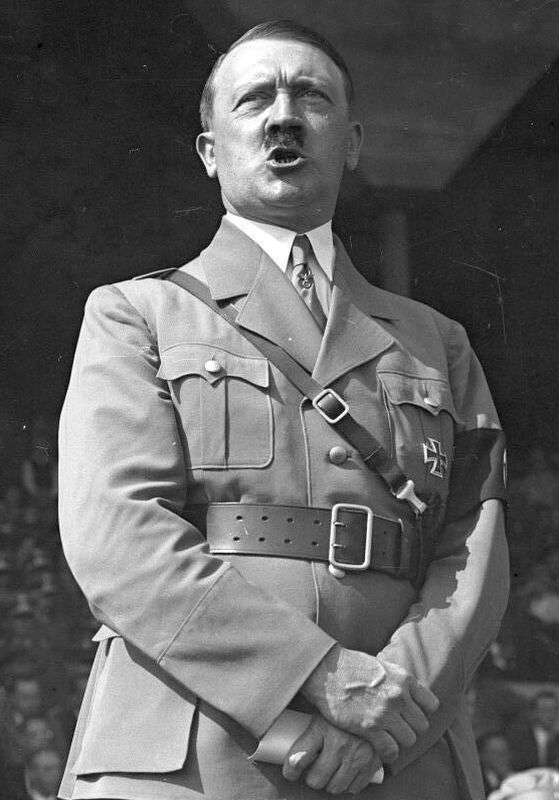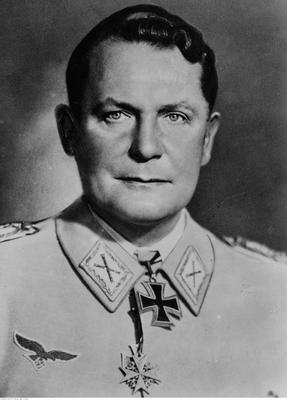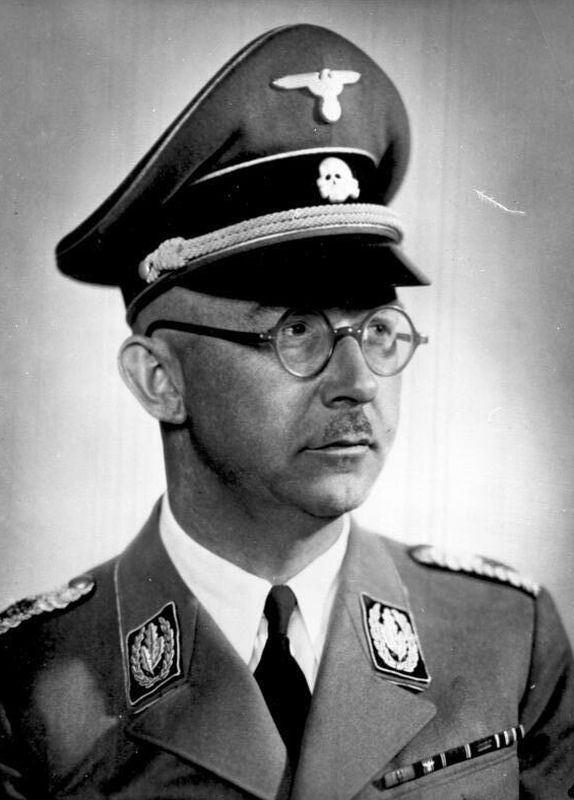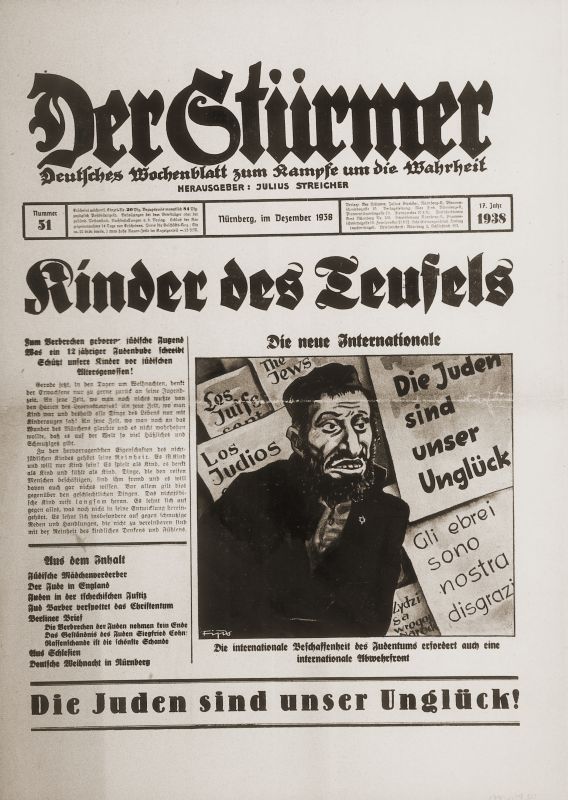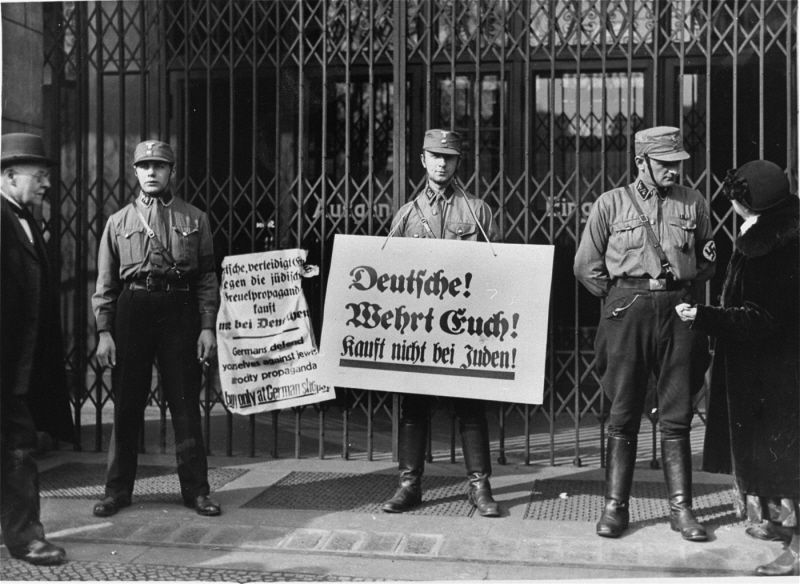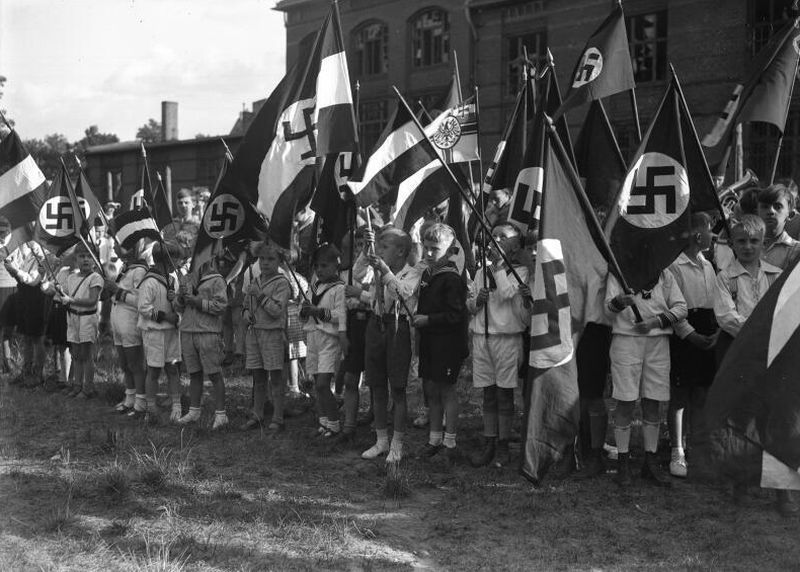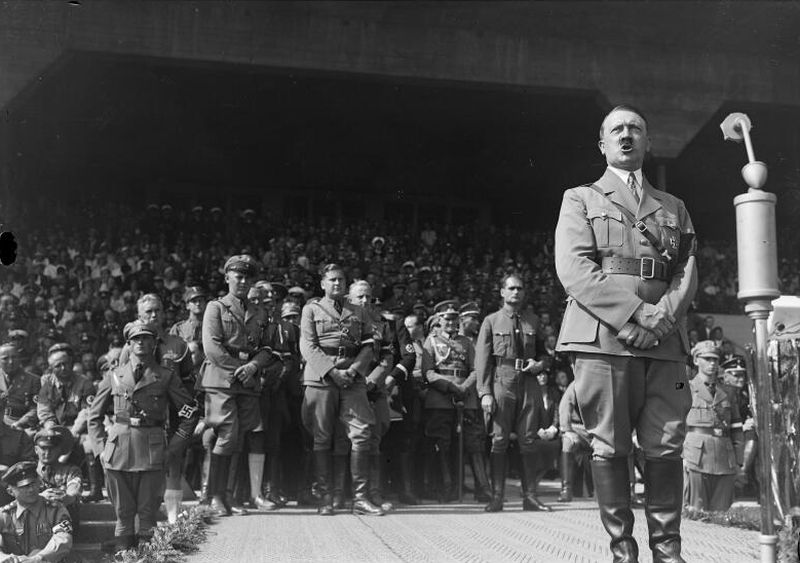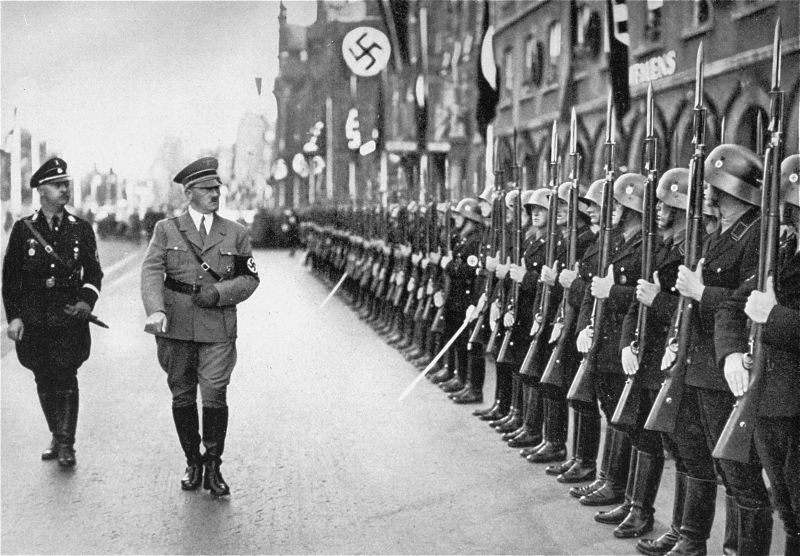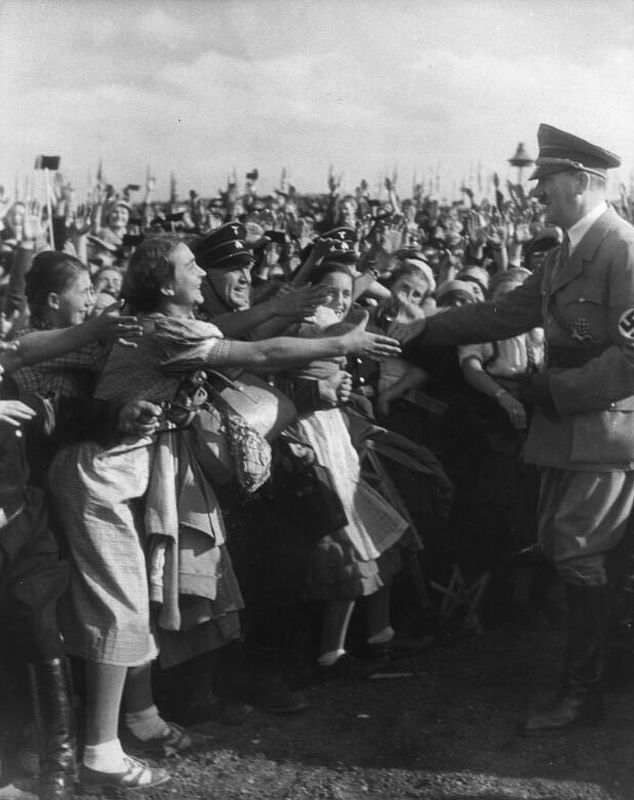The official ideology of the German state under Hitler (1933‒45) was National Socialism (Nationalsozialismus) – Nazism/Hitlerism. This was a German version of fascism, based on racist convictions that included extreme anti-Semitism. Hitler’s racist views went hand in hand with the need to unite Germans around a common goal. He knew that a way of bringing the nation together was to find a common enemy. According to Hitler, the chief enemy of the German Third Reich were the Jews, who were responsible for starting the Great War, and the Communists. Hitler regarded their destruction to be a prerequisite for achieving dominance in Europe.

